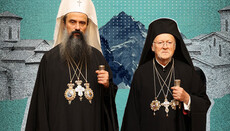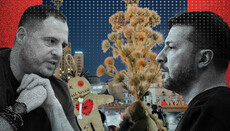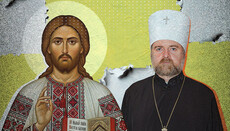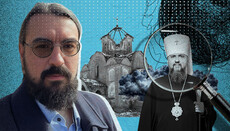Two schisms: Why did Bulgaria succeed in what Ukraine cannot?

How the Pan-Orthodox Council helped to overcome the schism in Bulgaria that arose simultaneously with Filaret-initiated split.
In 1992, almost simultaneously with our so-called “Filaret’s split”, there was a split in Bulgaria. In 1998, it was healed. Why did it work in Bulgaria but not with us? What role did the Constantinople Patriarchate play in the former and the latter case? And is it possible to draw on the Bulgarian experience to solve the Ukrainian church issue?
In short, the history of the Bulgarian schism looks as follows.
In the late 1980s, when the so-called socialist camp had already disintegrated and the Soviet Union was on the verge of this, the wind of change was also blowing in Bulgaria. This wind brought along the conviction that everything Western and capitalist is good, and everything Soviet and Communist is bad. Moreover, one must break immediately and decisively with this hated past.
We will not evaluate how justified this approach is in the realm of politics or economics, but let us say that in church-related matters it is basically inappropriate. Yet, unfortunately, such a rebellious spirit penetrates the Church. And in the Church there are people, usually young and ambitious, who urge to destroy everything “to the foundation, and then ...”, as the International song goes.
Back in 1989, Hieromonk Christopher (Sybev) came to the fore in Bulgaria, who stated that the Church needed a “new democratic Synod” instead of the old one, which allegedly tarnished itself having relations with the communist regime. Contrary to the opinion of his hierarchy, he founded a committee for the protection of religious rights, which was supposed to contribute to the "democratization" of church governance.
And in 1990, priest and professor of canon law Radko Poptodorov published an article in which he directly accused the Synod of the Bulgarian Orthodox Church (BOC) in collaboration with the communist government and criticized the election of Bulgarian Patriarch Maxim in 1971.
The wind of change brought along the conviction that everything Western and capitalist is good, and everything Soviet and Communist is bad. Moreover, one must break immediately and decisively with this hated past.
In 1991, the Union of Democratic Forces party won the next election in Bulgaria, the ideology of which was a radical break with the “hated” past and a reversal to the West. Hieromonk Christopher (Sybev) not only became a member of parliament from this political force but also headed the Parliamentary Commission for Religious Affairs.
In 1992, this commission raised the question of the illegality of the election of Patriarch Maxim in 1971. It was supported by the Directorate of Religion to the Council of Ministers of Bulgaria, which by its decision declared the election of Patriarch Maxim in 1971 illegal, while the patriarch himself as deposed.
The Bulgarian authorities of that time demonstrated a very peculiar understanding of the democratic principle of separation of the Church from the state. In this they even were able to one-up the Ukrainian authorities, which did not recognize the Kharkov Council in 1992 as legal and the removal of Filaret Denisenko from the administration of the UOC.
Here is the first difference between the Bulgarian schism and the Filaret-led schism. Whereas in the former case, the authorities ganged up against Patriarch Maxim for allegedly collaborating with the KGB, then in Ukraine the authorities warmly supported Denisenko, who was simply the embodiment of such cooperation in its closest form.
Almost simultaneously with the decision of the Directorate of Religions, the illegality of the election of Patriarch Maxim was also announced by a group of six bishops. By the way, literally a few days later this group increased to seven, since it "ordained" Hieromonk Christopher (Sybev) "bishops".
In this respect we can point out the following difference: in Bulgaria, although scanty but still a group of hierarchs, who were canonical clergymen at the time of the split, fell into schism. In Ukraine, only one vicar bishop, Bishop Jacob (Panchuk) of Pochaev who had been earlier expelled by the brethren from the Pochaev Monastery, followed Filaret.
The rebellious Bulgarian hierarchs demanded to remove Patriarch Maxim and call new elections. However, most hierarchs and clergy remained loyal to the Patriarch and the Synod. Then the rebels organized an “alternative Synod”, at the head of which they appointed Metropolitan Pimen (Enev), senior by ordination and, relying on the support of the authorities, began the raider seizure of the canonical Church.
They "ordained" the "alternative hierarchs", took over the Synodal Chamber in Sofia, which housed the Supreme Administration of the BOC, as well as Sofia Theological Seminary and Academy, which became known subsequently as the Theological Department at Sofia University of St. Clement of Ohrid. By the way, Professor Radko Poptodorov, the author of the first article with attacks on Patriarch Maxim, was appointed the new rector of the Academy.
The Bulgarian authorities recognized the “alternative Synod” as the only legitimate governing body of the BOC and transferred all church property to its disposal.
In Bulgaria, although scanty but a group of hierarchs, who were canonical hierarchs at the time of the split, fell into schism. In Ukraine, only one vicar bishop followed Filaret.
In 1996, Metropolitan Pimen of Nevrokop was elevated to the rank of “patriarch”. Filaret Denisenko took direct part in his enthronement, who by that time had already become the Kiev “patriarch,” replacing Vladimir Romaniuk, who died under obscure circumstances.
At that time, both Filaret and his foreign schismatic colleagues actively promoted the theory of the self-sufficient “alternative family” of the Orthodox Churches and therefore entered into communion with all religious crooks in different countries who agreed to this state of affairs.
In the same 1996 year, a Bishops’ Council of Bulgaria was held, which resolved to remain faithful to Patriarch Maxim. It excommunicated Pimen from the Church and deprived all hierarchs, who were “ordained” in schism, of their dignity.
Since 1992, when the Bulgarian schism arose, along with the "ordination" of the "alternative hierarchs and the seizure of church property, the reverse process took place. Some bishops and clergy brought repentance and returned to the fold of the canonical BOC.
A common feature of the Bulgarian and Ukrainian schisms is that all the Local Churches dissociated themselves point-blank from any support for the schismatics only until 2018, when the Patriarchate of Constantinople entered into communion with Ukrainian break-away groups.
It is believed that the Bulgarian schism was healed in 1998. That year, from September 30 to October 1, the Pan-Orthodox Council was held in Alexander Nevsky Cathedral, in which representatives of almost all the Local Orthodox Churches, except the Georgian and American, which, however, some Local Churches do not recognize as autocephalous. Seven Local Churches were represented by their Primates. Patriarch Bartholomew of Constantinople and Patriarch Alexy II of Moscow were also present at that Council.
There are two more significant differences in the Bulgarian and Ukrainian schisms.
Firstly, the Patriarchate of Constantinople was consistently on the side of the canonical BOC led by Patriarch Maxim and did not change its position, as in the case of the Ukrainian split.
Secondly, Patriarch Bartholomew did not at all reject the possibility of a conciliar solution to the Bulgarian issue by all Local Churches. He did not try to solve this problem single-handedly, as in Ukraine, although the Bulgarian Church was much longer part of the Patriarchate of Constantinople than the Kiev Metropolitanate, therefore Patriarch Bartholomew had more grounds to say he could resolve the Bulgarian church conflict single-handedly.
The Pan-Orthodox Council supported Patriarch Maxim of Bulgaria and his Holy Synod, condemned the actions of the schismatics and called them to repentance. Indeed, most of the “hierarchs” and “clergy” who’d backslid in the schism brought repentance right at the Council and were reunited with the Church.
But there were those who remained in the split. They chose a new leader, "metropolitan" Innokenty (Petrov) of Sofia, and continued their schismatic activity. The Bulgarian schism finally ceased to exist in 2012, when Innokenty (Petrov) sent a repentant letter to the BOC Synod and was reunited with the Church.
Thus, the Bulgarian and Ukrainian schisms have both common features and significant differences.
Common features:
- Both splits emerged for political reasons.
- Both splits were supported by the state.
- In both cases, schismatics quickly began to “ordain” “alternative hierarchs”.
- In both cases, most hierarchs, clergy, and believers remained faithful to the canonical Church.
Differences:
- In Bulgaria, a split was directed against the Patriarch, who was accused of relations with the communist regime. In Ukraine, the split was led by the person who embodied cooperation with the communist regime.
- In Bulgaria, the split was initially supported by a significantly larger number of canonical bishops than in Ukraine.
- In Bulgaria, the problem of schism was resolved collectively by all the Local Churches, while in Ukraine the Patriarchate of Constantinople tried unsuccessfully to resolve it alone.
- In Bulgaria, all Local Churches were on the side of the canonical BOC and did not change their position. In Ukraine, after many years of consistent support of the canonical UOC, the Patriarchate of Constantinople sided with the schismatics, followed by the Alexandrian and the Greek Churches.
Despite the very significant common features, it must be recognized: the cardinal difference between the Ukrainian and Bulgarian schisms is that in Ukraine, the monolithic unity in the position of the Local Orthodox Churches, which was the case in Bulgaria, was violated. Therefore, it is quite difficult to learn any lessons from the experience of healing the Bulgarian schism and apply them to Ukraine. But there are some ideas to draw on from the Bulgarian experience.
Firstly, it can be stated that the decisions adopted in 1998 at the Pan-Orthodox Council in Sofia constitute part of the corpus of canonical law of the Church. And these decisions indicate that the schism can be healed only by repentance and nothing else. In addition, there is also a signature of Patriarch Bartholomew under these decisions.
Secondly, a Pan-Orthodox Council can be initiated to heal the schism exactly where it exists, i.e. in Kiev.
Of course, in the context of the opposition of the Patriarchate of Constantinople to any attempts of seking a collective solution to the “Ukrainian issue”, it would be hard to organize such a Council.
Still, if a Pan-Orthodox Synaxis of the Primates of the Local Churches in Jordan does take place at the invitation of Patriarch Theophilos III of Jerusalem, it can become a testing-site for the similar full-fledged Pan-Orthodox Council in Kiev.
Indeed, at a meeting in Jordan, it is proposed to only discuss the problem of pan-Orthodox unity, which was violated by Patriarch Bartholomew. But it would be appropriate to resolve the "Ukrainian issue" precisely in Kiev – at least such an idea could be voiced in Jordan.
Finally and most importantly – what can be learned from the Bulgarian case? The split there would not have been healed even by the Pan-Orthodox Council if the episcopate, clergy and believers had not rallied around their canonical Patriarch Maxim. In Ukraine, this unity of all members of the Church around His Beatitude Metropolitan Onuphry exists and is even more potent than in Bulgaria. Therefore, there is hope that the Ukrainian schism will someday become a turned over page in history.











